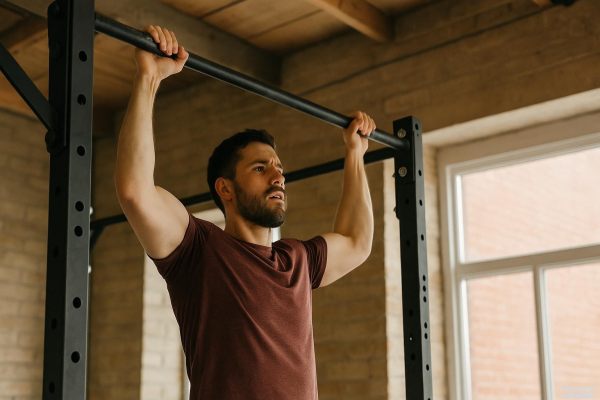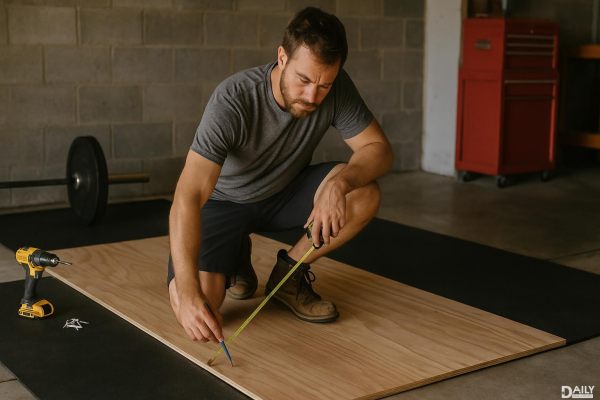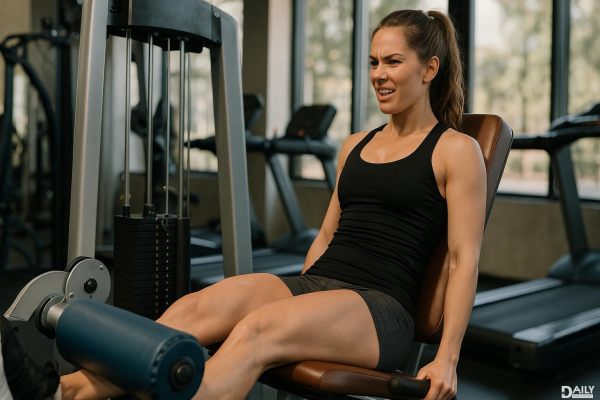If you’re struggling to build muscle, it might not be your workout routine or diet—it could be your bench setup. Pros have been using a simple yet effective trick with the spotting bench to maximize gains, and it’s time you tried it too. This method isn’t just about lifting heavier weights; it’s about optimizing your form, safety, and muscle engagement to get the most out of every rep. Let’s dive into how this trick works and why it’s a game-changer for muscle growth.

When you’re lifting weights, especially during compound movements like bench presses, your body relies on stability to perform the exercise correctly. A spotting bench isn’t just there to catch the barbell if you fail—it’s a tool to enhance your workout. By adjusting the bench’s angle and positioning, you can target specific muscle groups more effectively. For example, a slight incline can shift the focus to your upper chest and shoulders, while a flat bench emphasizes the pectorals. The key is to use the bench to create tension in the right areas, ensuring your muscles are working harder without compromising your form.
First, make sure your bench is sturdy and at the right height. Your feet should be flat on the floor, and your back should maintain a natural arch. When using a barbell, position the bench so the bar aligns with your eyes when you’re lying down. This setup ensures you’re lifting in a straight line, reducing strain on your shoulders and elbows. For dumbbell exercises, adjust the bench angle to isolate the muscles you’re targeting. A 30-degree incline is ideal for upper chest development, while a decline bench can engage the lower pectorals. Don’t forget to use the spotter arms—they’re not just for emergencies. They help you push past your limits safely, allowing you to perform forced reps or drop sets without risking injury.
Forced reps are one of the most effective ways to break through plateaus and stimulate muscle growth. With the help of a spotter or the bench’s safety arms, you can perform additional reps after reaching failure. This technique pushes your muscles beyond their usual limits, creating micro-tears that lead to hypertrophy (muscle growth). The spotting bench ensures you can perform forced reps safely, giving you the confidence to go all out without worrying about dropping the weight. Just remember to keep your form tight—cheating on reps won’t do you any favors.
Drop sets are another pro-level technique that pairs perfectly with the spotting bench. After completing a set to failure, reduce the weight by 20-30% and immediately perform another set. The bench’s stability allows you to focus solely on the movement, maximizing muscle fatigue and metabolic stress. This method is particularly effective for smaller muscle groups like the triceps or shoulders, where endurance plays a significant role in growth. Combine drop sets with forced reps, and you’ve got a recipe for serious gains.
Even with the best setup, it’s easy to fall into bad habits. One common mistake is relying too much on the spotter arms or a partner, which can lead to lazy form. Another is using too much weight, sacrificing range of motion and muscle engagement. Remember, the goal is to work your muscles, not just move the weight. Keep your movements controlled, and focus on the mind-muscle connection. Lastly, don’t neglect your warm-up—cold muscles are more prone to injury, especially when pushing your limits.
Building muscle takes time, and rushing the process can lead to injuries or burnout. Start with lighter weights to master your form, then gradually increase the load as you get stronger. Track your progress by logging your workouts, noting the weights, reps, and sets you complete. Over time, you’ll see steady improvements in both strength and muscle size. And don’t forget to rest—your muscles grow during recovery, not while you’re lifting. Aim for at least 48 hours of rest between training the same muscle group.
If you’ve been stuck in a muscle-building rut, the spotting bench trick might be the missing piece of the puzzle. By optimizing your setup, incorporating advanced techniques like forced reps and drop sets, and avoiding common mistakes, you can take your gains to the next level. Remember, consistency is key—stick with it, and you’ll see results. Now, hit the bench and start lifting smarter, not harder!
























